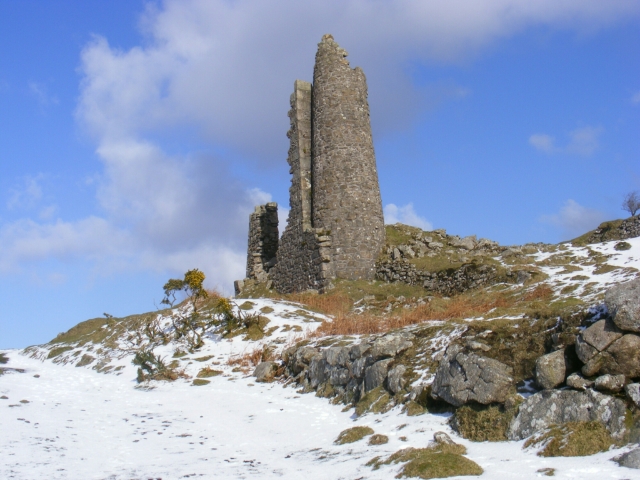The Liskeard Mining District in 1863> Was Brenton Symons right?
In the previous posts I identified that the Liskeard 1863 Geological map of the Caradon Hill area and the modern British Geological Survey disagreed on the location of the granite/killas boundary. So which one was right?
I hoped it was Brenton Symons Victorian map, for no other reason that it appeared more detailed. However, with a bit of digging in some of the books on the shelves I managed to discover which map was best.
Much of the modern evidence came from my well worn, and annotated copy of ‘Dines’, or to give its full title ‘The Metalliferous Mining Region of South West England’
South Caradon Mine
Strangely enough, Dines was of not much help here
“Granite overlayed with killas in the south east.”
Was the only scrap of information it offered. Webb and Geach in their 1863 book was of more use though
“The junction of killas with granite occurs a little south of Caunter and Kitto’s lodes. “
This statement coincides with the course of the contact shown on the modern map. It is rather strange that Symons was in error within such a well mined sett as South Caradon, and even stranger that he was in disagreement with Webb and Geach, considering their book and his map were believed to be have been produced in association with each other.
The Victorian authors support the modern location of the granite boundary within their reports on South Caradon
Wheal Hooper
.
Wheal Hooper
The whole of the sett is in killas, which overlays the granite at about an angle of 45°, and the junction occurring at the northern boundary, the engine shaft at the 54 comes into granite, its contact with the slate being well-defined, no decomposition having taken place. It should be noticed that two elvan courses of felspatic granite run parallel to the lodes.
Agents report
The winze below the 62 (a most promising point) would, however, have been proceeded with, but for a great influx of water during the last 3ft. sinking, causing a great advance in the price, and rendering it necessary to purchase a larger lift in order to proceed with the work. It was therefore thought more advisable to suspend it, as the cutting of the lode at the 90 would probably drain off all the water, and enable us to sink the winze at a very considerable saving, and without the aid of a lift. Near the bottom of the winze is a sort of slide which appears to have heaved the lode to the south, whence flows the water. The granite in the bottom of the winze is of favourable description, and the cleavages are faced with copper ore
So far then, my hopes for Brenton Symon’s work being more accurate had been proven incorrect. The next mine to be looked at was second most important one on the map, Phoenix United.
Webb and Geach state-
Phoenix.
“The present workings are in granite, but a tongue of killas is deposited in the south-eastern portion of the sett, in which is a promising lode worked on the backs for a long distance, and called the Snuff-box Lode.”
Dines presented an excellent resource to disentangle the complex geology here, nice cross section of workings on the main lode.
Part of this diagram is shown here (Copyright BGS). The plan show the lode running west to east. My annotated yellow line is the granite/Killas contact. Killas to the right, granite to the left. It is indicated reaching the surface close east of West’s Shaft. The conclusion from this fact is that again the Modern map is more accurate.
The dotted yellow line is the Great cross-course, more on that feature in the next post.
The final mine I studied in detail was South Phoenix. Brenton Symons shows that sett within granite, and yet the British Geological Survey clearly show a large slab of killas intruding between two faults as far west at the Hurlers.
Again Dines contained a diagram that provided an answer.
This cross section runs north to south across the South Phoenix Sett. It clearly shows the ground between Prosper Shaft and Parson’s Shaft being ‘clay slate’. An indication that yet again the modern map is more accurate.
Despite of my desire to prove the superiority of the Victorian cartography, when it came to depicting the granite/killas contact the modern map was clearly superior.
British Geological Survey 1, Brenton Symons 0
Next round would be the cross-courses, or faults.
Brenton Symons’ 1863 map is reproduced in ‘The Liskeard Mining Area in 1863’






I found the history of the Pheonix United Mine of great interest. Often taken as a child by parents and grandparents to the area. Where my late father Sir Vernon Seccombe of Saltash often mentioned the family connections to the mining industry.
LikeLiked by 1 person